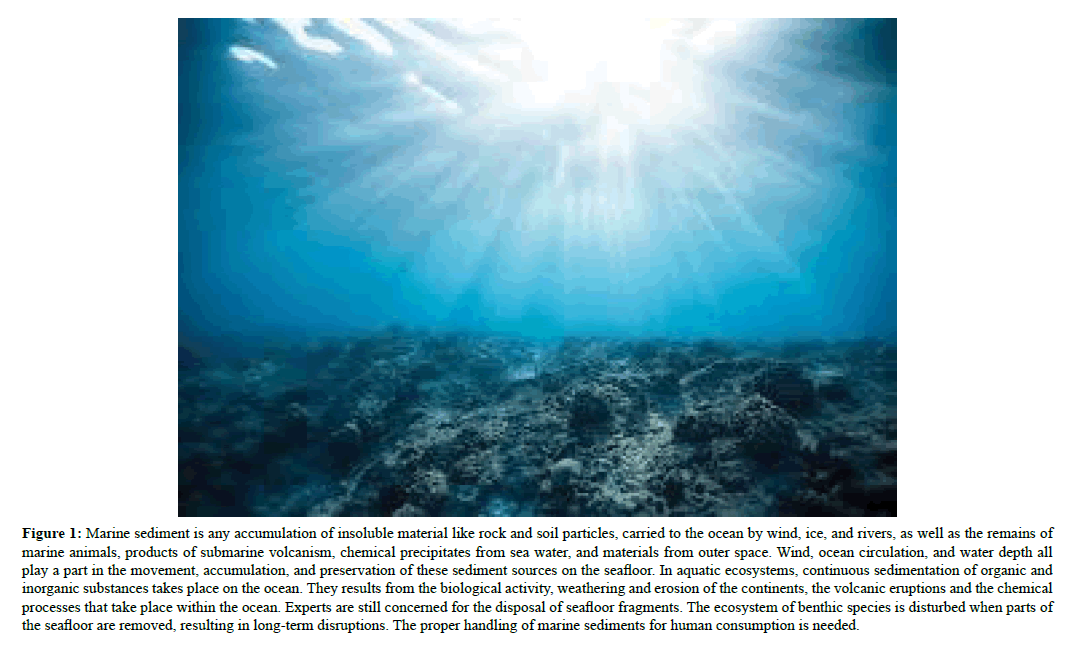ISSN : 2348-1927
Annals of Biological Sciences
An overview: Marine Sediments
Ayota Yoshida*
iMedPub, Green Lane, London, UK
Received Date: March 02, 2021, Accepted Date: March 08, 2021, Published Date: March 15, 2021
Figure 1: Marine sediment is any accumulation of insoluble material like rock and soil particles, carried to the ocean by wind, ice, and rivers, as well as the remains of marine animals, products of submarine volcanism, chemical precipitates from sea water, and materials from outer space. Wind, ocean circulation, and water depth all play a part in the movement, accumulation, and preservation of these sediment sources on the seafloor. In aquatic ecosystems, continuous sedimentation of organic and inorganic substances takes place on the ocean. They results from the biological activity, weathering and erosion of the continents, the volcanic eruptions and the chemical processes that take place within the ocean. Experts are still concerned for the disposal of seafloor fragments. The ecosystem of benthic species is disturbed when parts of the seafloor are removed, resulting in long-term disruptions. The proper handling of marine sediments for human consumption is needed.
Open Access Journals
- Aquaculture & Veterinary Science
- Chemistry & Chemical Sciences
- Clinical Sciences
- Engineering
- General Science
- Genetics & Molecular Biology
- Health Care & Nursing
- Immunology & Microbiology
- Materials Science
- Mathematics & Physics
- Medical Sciences
- Neurology & Psychiatry
- Oncology & Cancer Science
- Pharmaceutical Sciences

